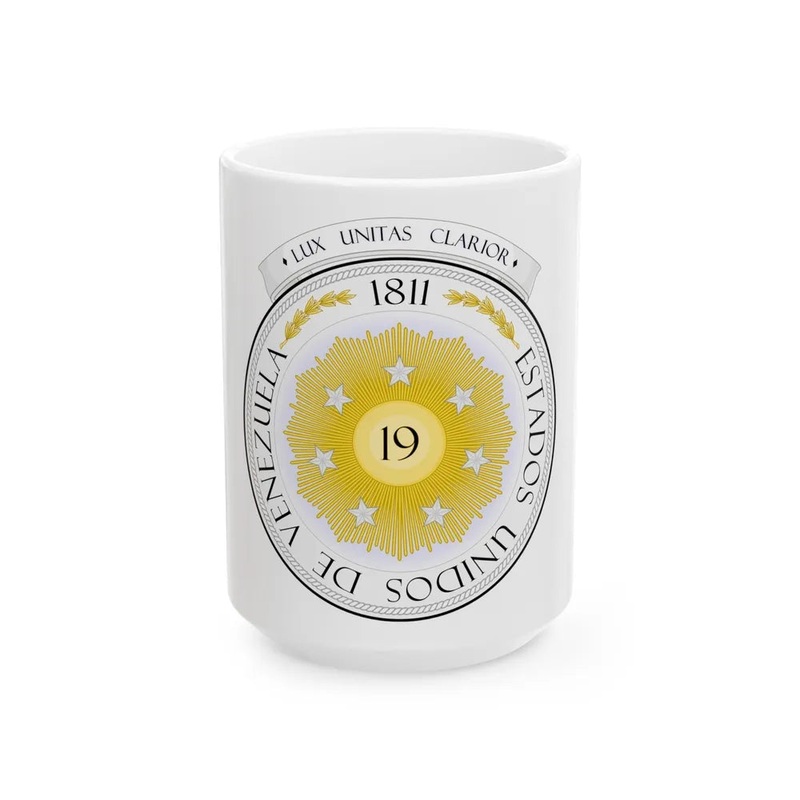
The Coat of Arms of Venezuela, as adopted in 1810 during the Venezuelan War of Independence, represents a significant historical symbol for the country. The shield is divided into four quarters. The first quarter displays a six-pointed star with five smaller points and one large point at the top, symbolizing the five provinces united under the leadership of Simn Bolvar. The second quarter presents a field of blue with the Virgin Mary standing on a crescent moon, referencing the Virgin of Caracas, the patron saint of Venezuela. The third quarter features three vertical green and white stripes, symbolizing the Venezuelan flag's colors. The fourth quarter showcases two crossed arrows and a hatchet, alluding to the indigenous resistance against Spanish rule. Above the shield stands a bicornual hat, symbolizing freedom and the Venezuelan people, with a red cap of liberty adorned with five white stars on each side. The motto "PAIDA DE LIBERTAD" (Son of Liberty) is inscribed at the base of the coat of arms. This historical emblem has been revised multiple times since its initial adoption, but it remains a powerful symbol of Venezuelan identity and independence.
